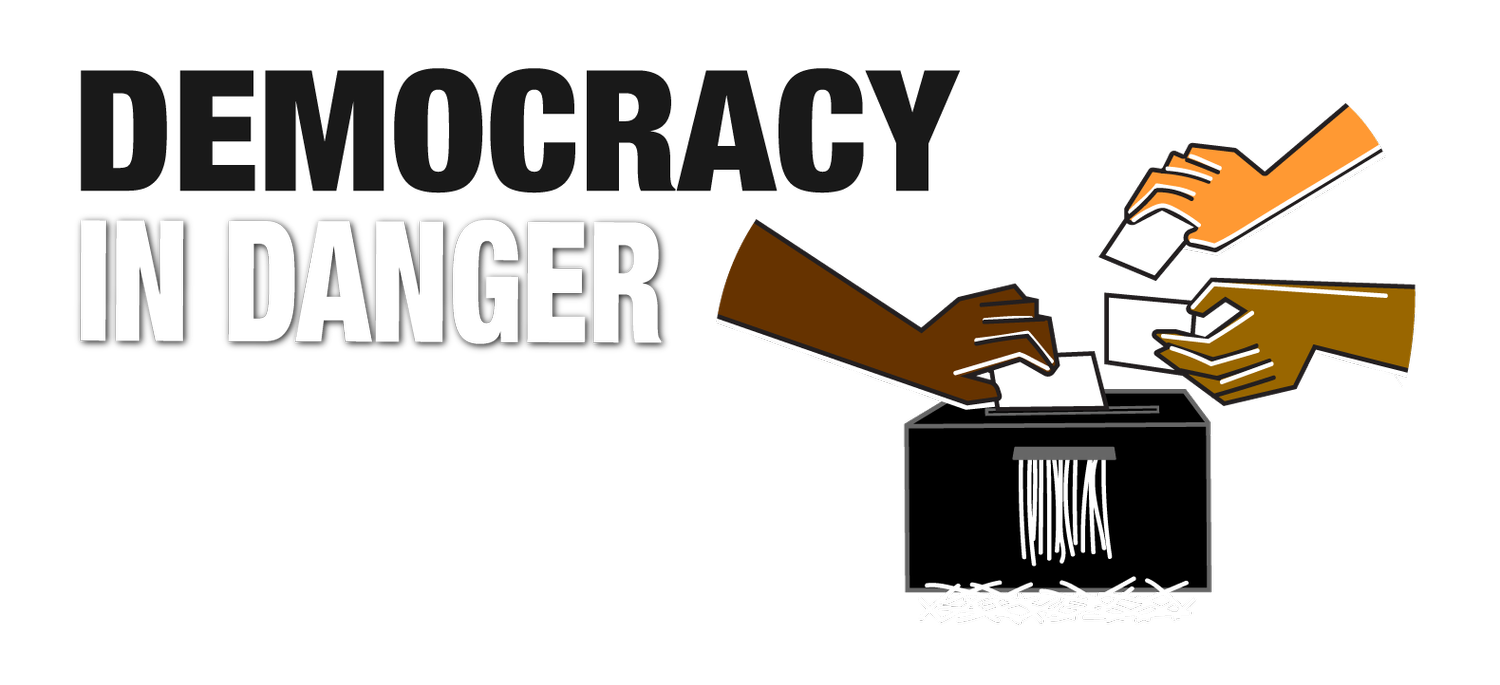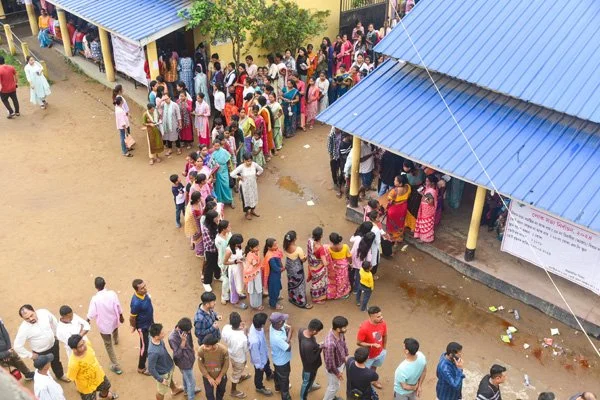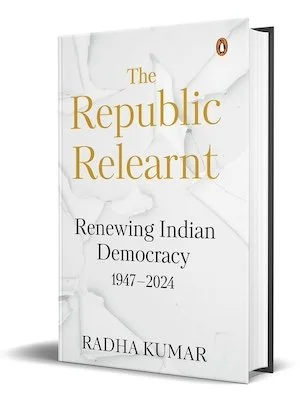Modi’s Momentum
Democracy in India is backsliding. Reversing the tide will take compromises and enormous will.
Read
India’s prime minister, Narendra Modi, is an unabashed autocrat. He has jailed political opponents, gone after Muslims with violence and hateful rhetoric, and dismantled checks on his power. So what explains Modi’s continued popularity? As some 600 million Indians head to the polls, we explore this question with political analyst Radha Kumar. She discusses what it would take for democratic renewal to take root in the world’s most populous nation, and what the past might portend for her country’s future.
In power since 2014, Modi is 73 years old and the standard-bearer of his ruling Bharatiya Janata Party, which seems likely to triumph again after voting concludes on June 1. Kumar breaks down the contradictions behind the BJP’s Hindu nationalist, or Hindutva, agenda — which runs counter to the country’s founding multicultural secularism. Peddling narratives of Hindu victimhood, Modi and his cronies have marginalized religious minorities and slandered India’s 200 million Muslims as infiltrators out to seize wealth and power.
But there are cracks in the party’s political foundations, Kumar argues. She sees possible evidence for the BJP’s fragility in a somewhat diminished voter turnout and the increased regionalization of Indian politics. To better understand India’s present-day autocratic tendencies, Kumar revisits what she calls “the first republic,” which — despite periods of democratic vitality — had its own problems. Between the late 1960s and 1980, Kumar says, the dynastic, ironclad rule of Indira Gandhi in particular ushered in a “state of decay” that still reverberates in Indian politics today.
Meet
Radha Kumar is an independent researcher and political analyst based in Delhi, and a member of the governing board of the Stockholm International Peace Research Institute. She specializes in ethnic conflict and women’s movements. Her latest book is The Republic Relearnt: Renewing Indian Democracy (1947-2024) (2024, Penguin). Previously, she chaired the UN University Council and directed the Delhi Policy Group, India’s first independent think tank. Kumar was also a board member at the UN Institute for Training and Research and the National Foundation for Communal Harmony. Follow her @RadhaKumar_.
The Republic Relearnt argues against the conventional consensus that views Indian democracy as an unbroken tradition since independence. Instead, Kumar isolates three periods of democratic renewal amid decades dominated by democratic decay.
Kumar writes regularly for The Wire, headquartered in New Delhi. Her latest piece undercuts the Economic Advisory Council’s alarmist figures on India’s religious demographics. In 2021, she lamented her city’s fortress-like protections against protesting farmers.
In The History of Doing: An Illustrated Account of Movements for Women’s Rights and Feminism in India, 1800–1990, Kumar traces the growth of the feminist movement in India drawing on correspondence and photographs across two centuries.
First published in 1997, Kumar’s Divide and Fall? Bosnia in the Annals of Partition offered an early analysis of balkanization in Bosnia, comparing it to ethnic conflict in Ireland, India, Palestine and Cyprus.
Kumar has written two books that touch on India’s history of disputes with its Muslim-majority neighbor, Pakistan: most recently, Paradise at War: A Political History of Kashmir and, in 2005, Making Peace with Partition.
Learn
Modi’s rise to power began in the 1990s. Writing for Al Jazeera, Nilanjan Mukhopadhyay explains how Modi gradually helped transform the BJP from a marginal opposition party to the parliament’s ruling majority. Along the way, he became the country’s most powerful politician.
Hindutva has, in large part, defined that success. In 2019, NPR reported on the paramilitary wing of the BJP — the all-male Rashtriya Swayamsevak Sangh, which runs Hindu catechism, yoga sessions, summer camps and rifle training.
There’s also a new tool in the tactical box for Modi and the BJP: artificial intelligence.
Gallup offers a primer on the Indian election. A strong economy is giving Modi a lift, it shows. But those living in states with non-Hindu majorities have substantially less faith in the country’s democratic institutions.
With more than 1.4 billion people, India recently surpassed China as the most populous country in the world. It is also poised to be the world’s third largest economy by 2027.
This week, Reuters reported on heightened “fatigue” among India’s electorate. One expert told the news organization that, when votes are tallied on June 4, Modi and the BJP are likely to retain a majority of the 543 seats in India’s parliament — but a diminished one.
Ahead of the election, Modi’s government stepped up attacks on critics, jailing journalists and opposition politicians and charging officials of the rival Congress Party with corruption. In April, new evidence emerged linking India’s spy service to an assassination plot against a Modi critic in the United States.
But backsliding on civil rights and freedom of speech predates the current era, Ashoka Mody argues in a recent essay for The Atlantic.
At least one national institution stood up recently against the BJP’s dominance: the Indian Supreme Court. In February, the justices ordered a state-run bank to unmask unlimited and anonymous campaign contributions made under a 2017 “electoral bond” scheme. “The resulting data dump has provided a rare glimpse into the machinery of Indian politics,” the Washington Post reports, “revealing how $2 billion has been secretly funneled by Indian companies into political parties since 2018, with roughly half going toward the ruling BJP.”
Indira Gandhi was the daughter of Jawaharlal Nehru, India’s first prime minister and a celebrated figure who helped lead the movement for independence from Great Britain. In 2017, Germany’s Deutsche Welle published a retrospective on Gandhi and her checkered legacy, marking what would have been her 100th birthday. From 1975 to 1977, she presided over a state of emergency in which civil liberties were severely curtailed. Her own bodyguards assassinated her on Oct. 31, 1984.
Rahul Gandhi, Indira’s Gandhi’s grandson, has picked up the family mantle. He has been touring the country trying to drum up support for the much weakened and embattled Indian Congress Party, once itself the entrenched establishment.
In 2021, we traced the subcontinent’s complex political history — and Modi’s growing grip on power — with a scholar and two journalists, on an episode called “India Burning.” It’s definitely worth another listen.
Heard on the show
To introduce this show we leaned on some news coverage from our colleagues at Britain’s Channel 4 and Germany’s DW News.
You’ll also hear some audio from a Canadian Broadcasting Corp. report published in November 2023, on the U.S. indictment detailing a stunning murder-for-hire plan. That plot was later connected to the Research and Analysis Wing — India’s foreign intelligence service.
Transcript
Coming soon!









